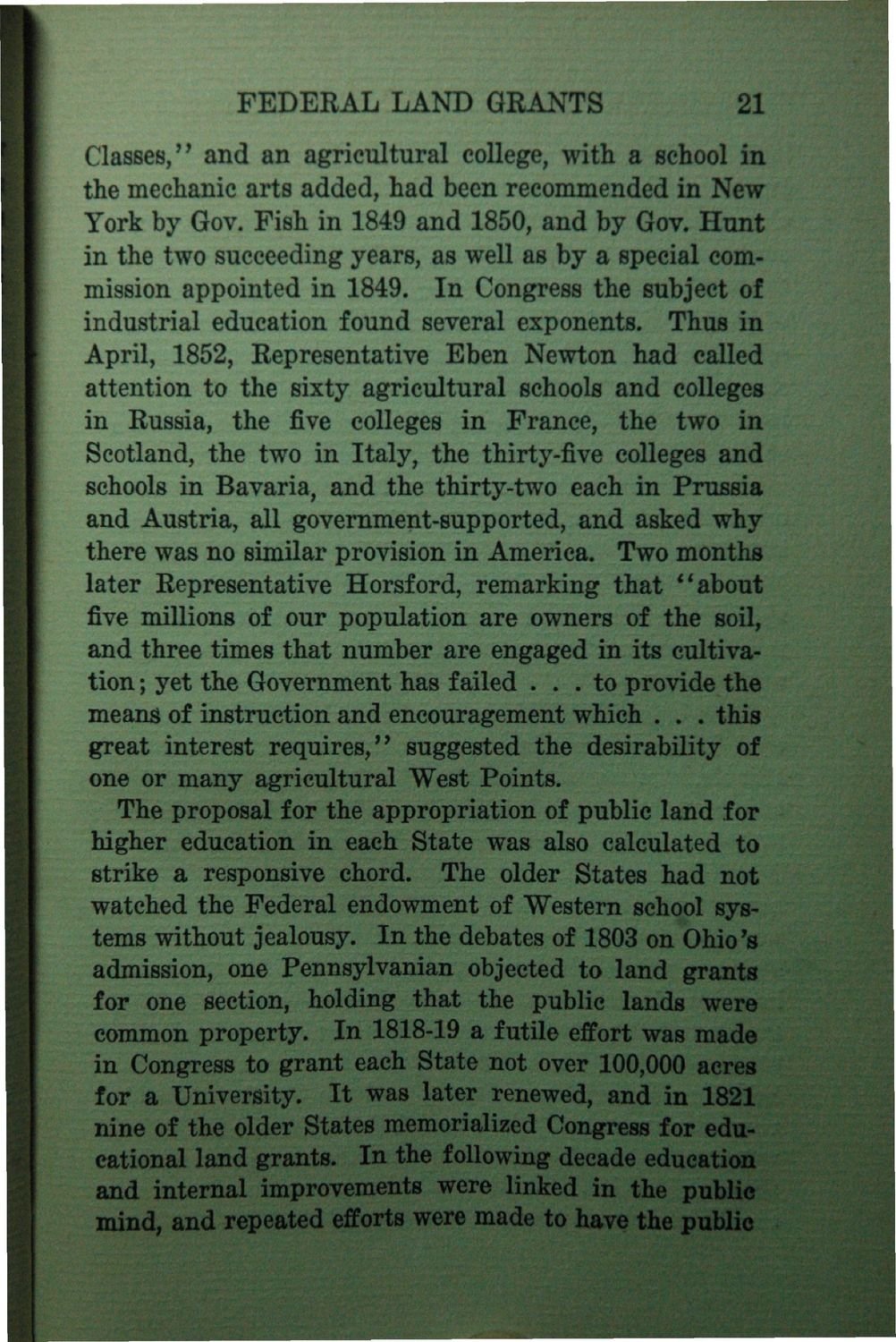| |
| |
Caption: Book - History of the University (Nevins)
This is a reduced-resolution page image for fast online browsing.

EXTRACTED TEXT FROM PAGE:
FEDERAL LAND GRANTS 21 Classes," and an agricultural college, with a school in the mechanic arts added, had been recommended in New York by Gov. Pish in 1849 and 1850, and by GOT. Hunt in the two succeeding years, as well as by a special commission appointed in 1849. In Congress the subject of industrial education found several exponents. Thus in April, 1852, Representative Eben Newton had called attention to the sixty agricultural schools and colleges in Russia, the five colleges in France, the two in Scotland, the two in Italy, the thirty-five colleges and schools in Bavaria, and the thirty-two each in Prussia and Austria, all government-supported, and asked why there was no similar provision in America. Two months later Representative Horsford, remarking that "about five millions of our population are owners of the soil, and three times that number are engaged in its cultivation ; yet the Government has failed . . . to provide the means of instruction and encouragement which . . . this great interest requires," suggested the desirability of one or many agricultural West Points. The proposal for the appropriation of public land for higher education in each State was also calculated to strike a responsive chord. The older States had not watched the Federal endowment of Western school systems without jealousy. In the debates of 1803 on Ohio's admission, one Pennsylvanian objected to land grants for one section, holding that the public lands were common property. In 1818-19 a futile effort was made in Congress to grant each State not over 100,000 acres for a University. It was later renewed, and in 1821 nine of the older States memorialized Congress for educational land grants. In the following decade education and internal improvements were linked in the public mind, and repeated efforts were made to have the public
| |